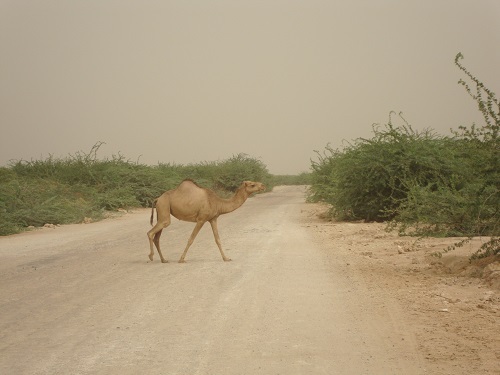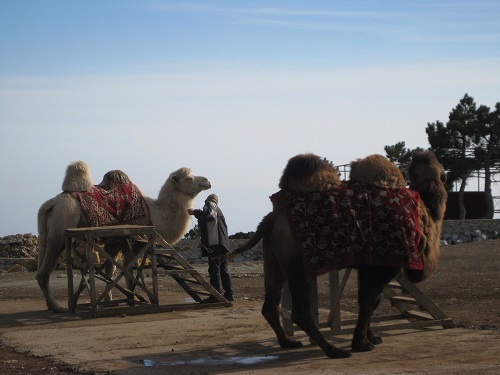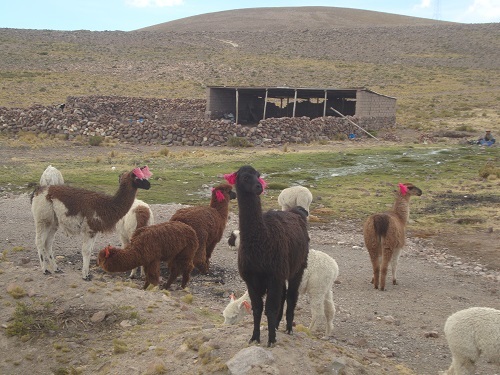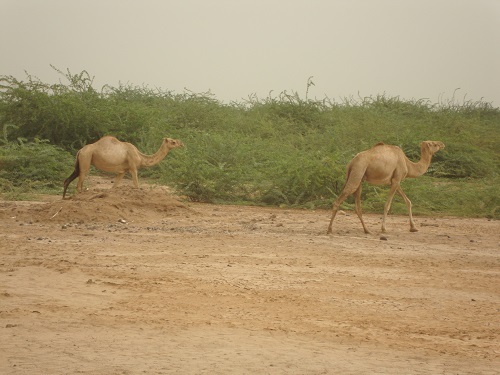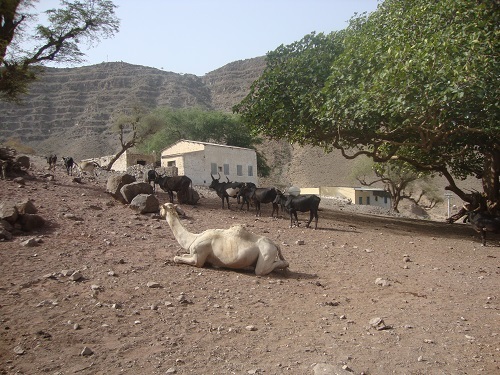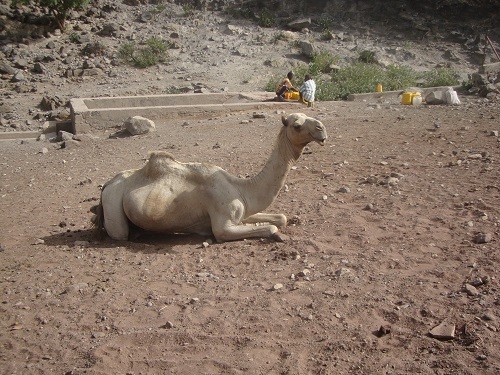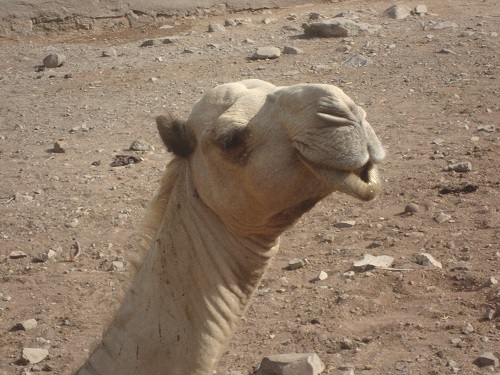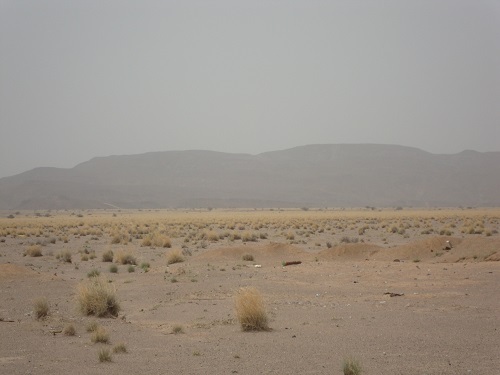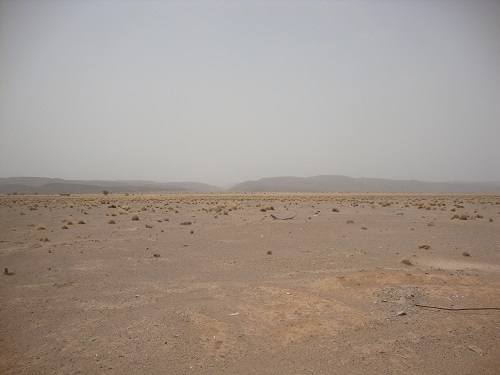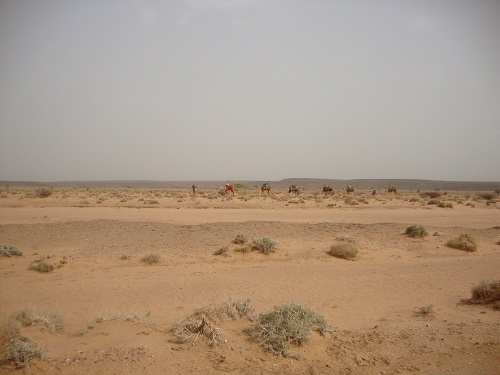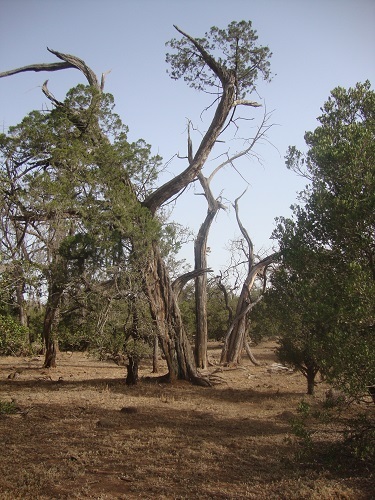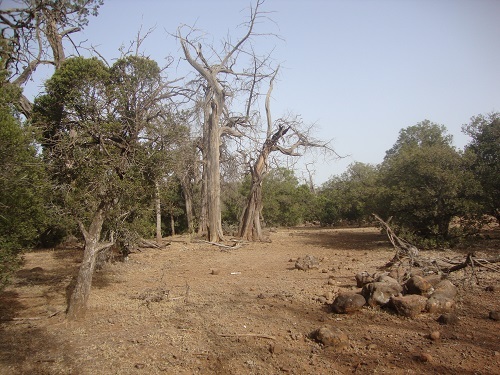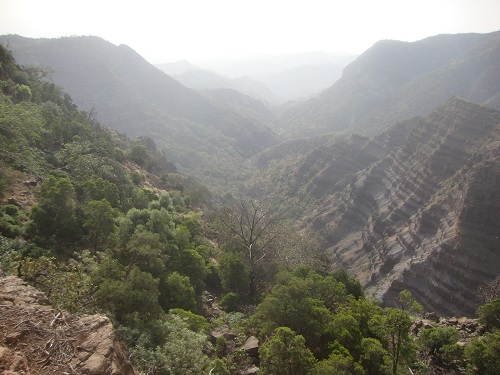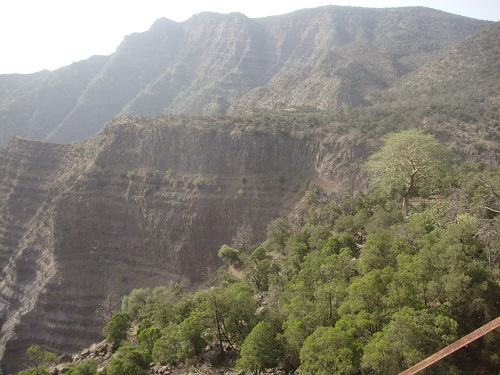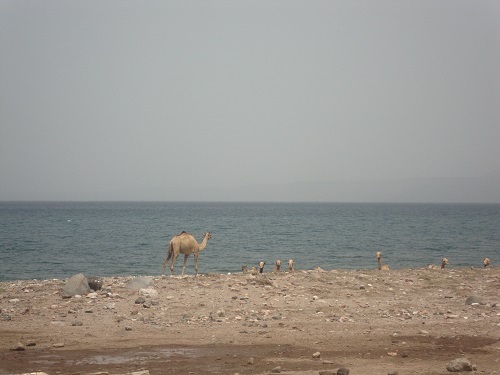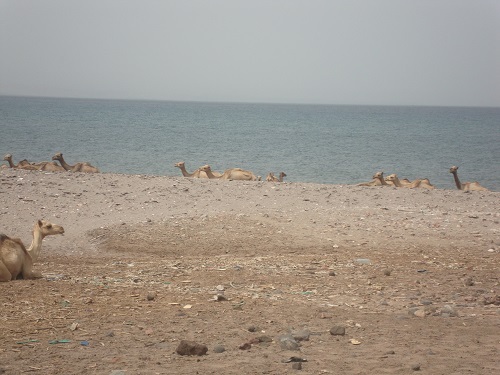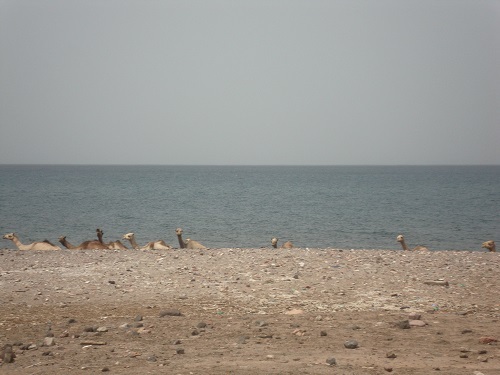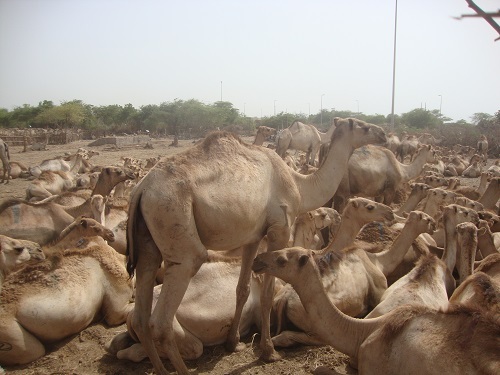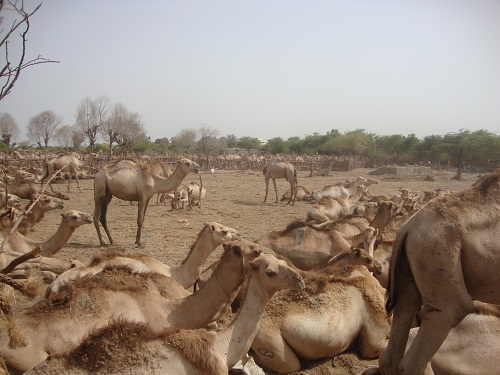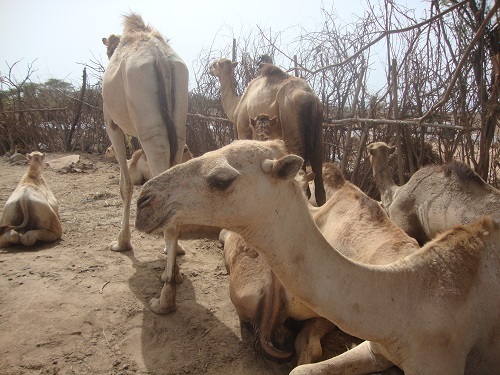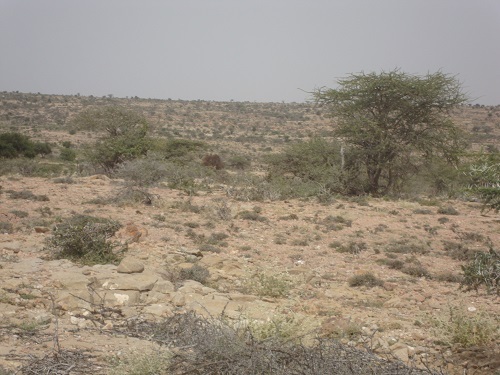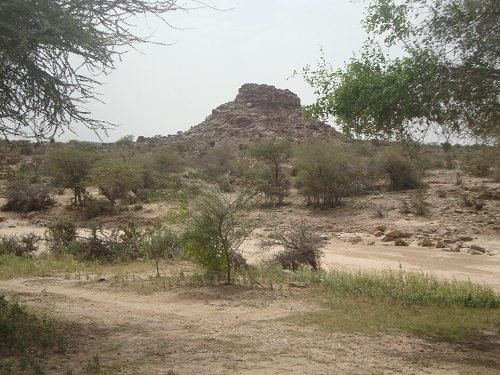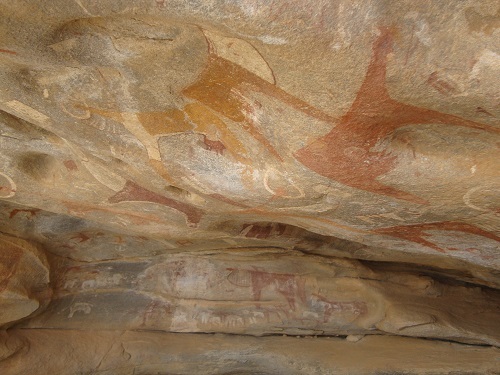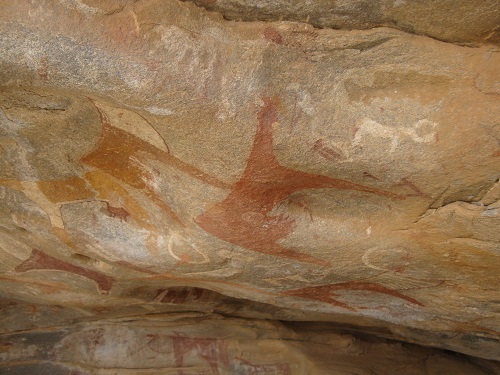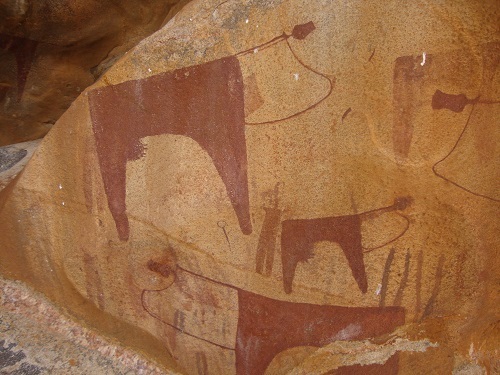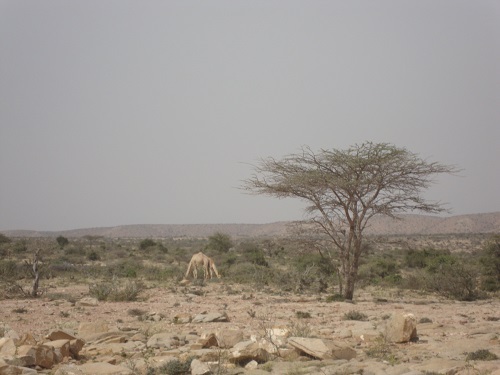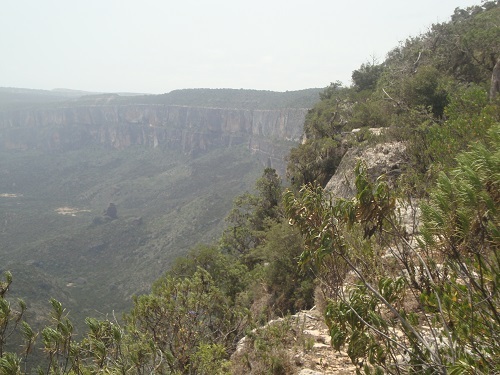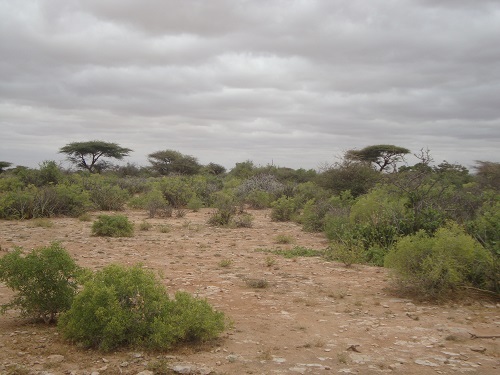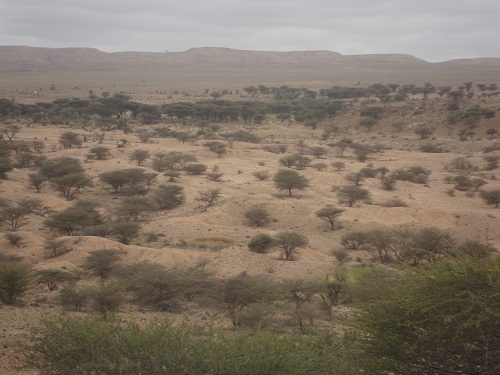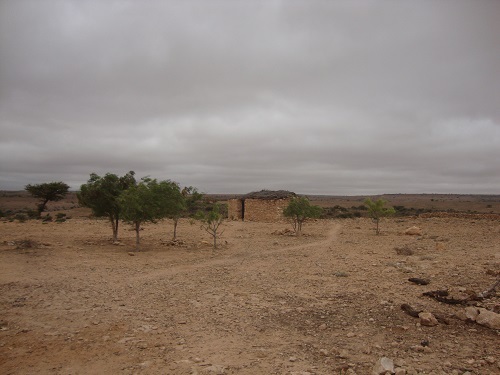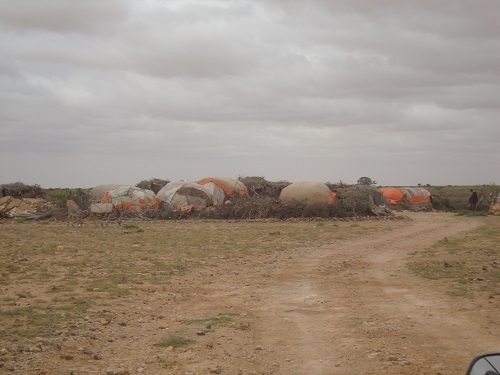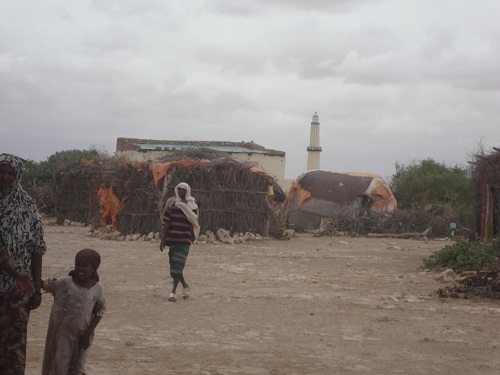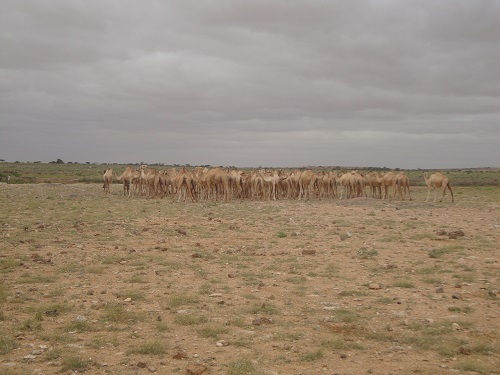They have a common ancestor, the two-humped camel and single-humped dromedary of Asia and Africa on the one hand and the llama, alpaca, guanaco, and vicuña of South America on the other. But you wouldn't think so to look at them today. For starters, the Latin American cousins have ditched the humps.
But just a blink of an eye ago during the Eocene Age - well 45 million to 50 million years back, to be precise - a little rabbit-size creature given the scientific name of Protylopus was romping through the woodlands of the North American west, its front legs shorter than its hind ones.
Over about 10 million years it grew to the size of a goat, evolving into Poebrotherium. Over the next 30 million years or so it evolved further into Procamelus, about the size of a large deer, until about 3 million to 5 million years ago.
It was then that it decided to move on, taking advantage of the Bering land bridge for a drang nach Westen into Asia and Africa, while roaming across the newly formed Isthmus of Panama in a drang nach Süden into South America.
Thus was it that it evolved into both llamas & Co of the Andean altiplano and our deliciously humped friends of the Old World - without which we would have never known the glories of the Eton Boating Song:
Now the sexual life of the camel
Is stranger than anyone thinks,
Because that amorous mammal
Just wants to bugger the sphynx,
But the sphynx's posterior orifice...
OK, enough of that for now.
As for the stay-at-home in North America, its last descendant disappeared along with the American horse, massive short-faced bear, even more titanic mammoth, giant ground sloth and sabre-tooth cat as that most vicious of all creatures, homo sapiens, executed its own destructive drang nach Osten over that selfsame Bering land bridge.
Today both branches are grouped together as the camelid family, but about all they have visibly in common is that they spit at you when you piss them off.
Here are some camelid encounters along the Looney Front.
Single-Humped Dromedary
We're in Djibouti on the Horn of Africa, one of the hottest places on Earth, chasing mirages literally, traversing Grand Bura, a huge sand plain between rocky mountains that is renowned for the mirages it produces in the shimmering desert oven. Daniel, the guide, is pointing them out everywhere - 'see that lake over there? And that lorry over there?'
Of course, Muggins sees nothing. I see a few far-off bushes, a couple of grey leafless thorn trees, but not a mirage in sight. Not even a goose - what a wild mirage chase!
We left Djibouti town earlier this morning, passing a huge U.S. base, vast rubbish dumps, an enormous vehicle graveyard with the shells of hundreds of wrecked cars and trucks, a myriad tyres, a border post with Somalia, bunkers left over from World War II to ward off an Italian invasion from its Somali colony.
And now we're driving across this baked, cracked pancake, Daniel trying to talk me into seeing mirages, and it's no go! Not even a pub with ice-cold beer. I'm remarkably mirage-free in Mirage Heaven.
We drive back across the sunbaked ground, Daniel in desperation. At last I see my mirage. Dromedaries!
Oops, they're the real McCoy, you fool!
Still in Djibouti, driving down from the cooler 5,000-foot heights of the Forest of Day - it's not a forest in the general sense, more a collection of groves of very ancient trees, junipers, wild olives, some 1,000 years old and then some, in a superb setting on the lip of a precipitous ravine and gigantic stepped escarpment, a rivulet at the bottom disappearing into the heat haze.
We're swallowed up by the heat as we approach the Red Sea. Hundreds of dromedaries are squatting down on the palm-studded pebbly shore, arses to the sea, evidently trying to catch what little wind there is in the searing heat while doubtless expelling their own massive wind resources towards the wavelets.
They look even more snooty and supercilious seated than standing, directing contemptuous glances down their long never-ending noses even when they look up.
Moving back towards Djibouti City itself you can't miss the dromedaries resting in their enclosures - there are zillions of them.
Over the border and into Somaliland, the former British colony which declared its independence from Somalia over two decades ago, huge rock overhangs on outcroppings on the vast savanna make a natural shelter against the elements on a 4,000-foot high plateau. Here, 7,000 to 10,000 years ago artistically inclined cavemen felt their home needed a make-over.
So they set to work with the minerals in the rocks at hand - deep red, white, yellow - and produced some truly remarkably paintings. OK, the Mona Lisa, or The Last Supper it ain't, but then old Leonardo had some 6,500 to 9,500 years of technological advances to work with.
These paintings at Laas Geel (Camel Spring) are not the sort you have to strain your eyes and imagination to decipher. The cows with udders waiting to be milked are clear as daylight, deep red with horns in white. So too are the men in white shirts, the women, the odd lion, the group dancing, and the family dog with his upturned tail.
But interestingly, despite the site's name, there are no paintings of dromedaries, which would seem to suggest their absence from the region way back then - unless my eyes just missed them.
But further south on the vast plateau from Somaliland's capital of Hargeisa, towards Erigavo and the spectacular escarpment of Daallo national forest 6,000 feet above sea level, on a dystopian outback worthy of Mad Max, your eyes won't alight on turbo-powered motorcycles.
Daallo National Forest
But they can't miss the nomads and many, many more dromedaries loping across the sandy savanna, partly covered with close tufts of green and copses of flat-topped trees, but much of it totally treeless.
You have to take an armed army guard with you because of insurgents and you pass through nearly a dozen police checkpoints, past at least one burned out tank from the 1980s civil war to get here.
Here you can truly see the nomadic and pastoralist life of Somalis: flock after multiple flock of goats and black-headed sheep, little stone-wall-enclosed encampments of low domed structures made of sticks, tarpaulins and anything else at hand, more permanent villages of similar domes, all the women head-scarved and with billowing robes, quite a few veiled as well, rock houses and the ubiquitous little green and white mosques and minarets.
And thousands upon thousands of snooty dromedaries. In fact raising them is a major industry, Somaliland having exported over 31,000 to Saudi Arabia in 2008 amid a total of 2 million head of livestock overall.
Now these aren't the only dromedaries on the Looney Front. Many more were encountered in the Sahara beyond Ouarzazate in Morocco, Timbuktu in Mali, and among the massive crazily shaped rocky mountains, vast rolling orange sand dunes, emerald green oases and arid plains of the Aïr Massif in Niger, but I either relied on my son for photos, so there's zilch, or on my own camera prowess - so there's also zilch.
Likewise in Israel and the Persian Gulf States. So that's all for dromedaries, folks!
[Upcoming blog next Sunday: Animal Planet on the Looney Front - Camelids, Section 2 : Camels, Ships of the Desert Plying the Desert]
______________
By the same author: Bussing The Amazon: On The Road With The Accidental Journalist, available with free excerpts on Kindle and in print version on Amazon.
